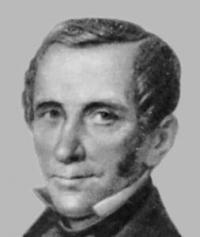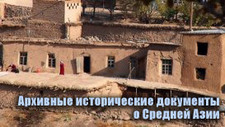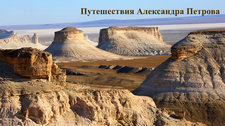You are here
Karl Meyer in Karkaraly Mountains.

Archaeological sites in Karkaraly National Park.
On August 26, the scientist wrote in his diary: "Karkaraly, a Russian outpost, lies at the foot of a mountain in a beautiful valley. Stacks of fresh, fragrant hay, golden fields, herds scattered across green meadows, European dwellings, and finally, people engaged in various activities, became a true enchantment for me... Russian settlers are engaged in agriculture, cattle breeding, and beekeeping, and are beginning to plant small vegetable gardens. The colony is growing by leaps and bounds, and soon a small town will appear here."
Karlarly Anton Andreevich Meyer. August 26, 1826.
Ecological tours in Karkaraly National Park.
By the Decree of the Government of the Republic of Kazakhstan of December 1, 1998, the Karkaraly State National Nature Park was established. Its 90,323-hectare territory is home to 114 bird species and 40 mammal species. Plant life is also diverse, with 742 species belonging to 93 families and 326 genera.
Of these, 66 are classified as rare or endangered. The park itself, like its surroundings, is rich in legends, tales, and archaeological and geological sites. If we strictly adhere to the list of the first European naturalists of this region, the title of pioneer was undisputedly secured by Karl-Anton Andreevich Meyer (1795 – 1855), the son of a German pharmacist, back in 1826.
A graduate of the University of Dorpat, he was renowned for his love of botany and passion for travel. The renowned Russian botanist Karl Friedrich Ledebur (1785–1851) noticed these abilities and received a 10,000-ruble grant from the Russian Academy of Sciences to study the nature of Western Siberia.
The third member of the expedition was Alexander Andreevich Bunge (1803–1890). The scientists devoted the first half of the summer of 1826 to the Altai Mountains and its foothills. On July 26, K.A. Meyer separated from his friends. With a team of four Cossacks in four carts, he left Semipalatinsk.
The detachment headed for the Karkaraly granite rampart with its pine forest and the Karkaraly fortification, founded just two years earlier. The journey took exactly a month, as K.A. Meyer consistently and thoughtfully collected herbarium samples from all the prominent granite groups.
On August 26, the scholar wrote in his diary: "Karkaraly, a Russian outpost, lies at the foot of a mountain in a beautiful valley. Stacks of fresh, fragrant hay, golden fields, herds scattered across green meadows, European dwellings, and finally, people engaged in various occupations, became a true enchantment for me...
Russian settlers are engaged in agriculture, livestock breeding, and beekeeping, and are beginning to plant small vegetable gardens. The colony is growing by leaps and bounds, and in a short time a small town will appear here." K.A. Meyer introduced himself to the local authorities.
These were the senior sultan of the Karkaraly Outer District Prikaz, Tursyn Chingizov; assessors, titular councilor Bubennov and collegiate assessor Darto (De Arto); centurion I.S. Karbyshev; and mullah Salikh Sagitov. Karl Andreevich explained the purpose of his arrival simply.
Following a methodology agreed upon with the Secretariat of the Academy of Sciences, the expedition collected botanical material, collected minerals, and observed the Steppe's fauna. They also sketched the everyday lives of local Kazakhs.
The scientist shared another mission of utmost importance to him: reaching the Altyntobe ashirite deposit on the banks of the Nura River. For a long time, stone enthusiasts considered it the only one in the world. St. Petersburg chemists and geologists called ashirite "dioptase" and "green emerald."
Magicians believed the mineral brought good luck in business and accumulated mental energy. St. Petersburg jewelers offered hundreds of rubles for dioptase crystals. On August 30, Meyer, Darto, and Sagitov, acting as guides, departed for Altyntobe Hill and the Altynsu River with a convoy of Cossacks.
They arrived safely at the landmark site and discovered small samples of dioptase in the waste heaps of an ancient mine. Large druses of copper-bearing emeralds were hidden within the hard limestone. Gunpowder was used to extract them. However, the amateur miners failed to uncover any particularly valuable collectible crystals.
The steppe mines of the Middle Zhuz had been exhausted half a century earlier. Nevertheless, Meyer was pleased with the ordinary, extremely fragile crystals. The trip, by chance, led to an important discovery. A geological discovery.
The law-abiding Darto sent a series of reports to the Omsk regional governor, S.B. Bronevsky, in which he states:
"I had the honor to inform Your Excellency that I set out with a passing traveler, Dr. Meyer, into the Steppe to search for alabaster. During this journey, nothing else was found except for limestone found in a mountain called Altyntobe, located 100 versts west of Karkaraly, which is composed almost entirely of copper ore.
While traveling through the Dzhusaly tract, I found red clay at the foot of this mountain, near the Auliebulak spring, or the Holy Spring, which flows from this mountain; it has an astringent, bitter-salty-sour taste... The use of Auliebulak water by the Kyrgyz brings relief from various ailments. As a sign of reverence for the healing power, people gather, light candles, and make sacrifices of various animals."
Over time, the Zhosaly mineral water deposits were explored. In 1964, a 160-bed sanatorium and health resort was opened. And how did K.A. Meyer prove himself as a naturalist? A fine expert on the Karkaraly flora, Doctor of Biological Sciences, Professor A.N. Kupriyanov assessed the achievements of his senior colleague:
"Describing the rich berry crop of the Karkaraly Mountains, Karl Meyer mentions red and black currants, bird cherry, and hawthorn. But what's surprising is that he mentions cranberries in the swamps and shrub cherry trees 25 miles from the Karkaraly Mountains.
These species were no longer encountered at the beginning of the XXth century and indicate that the flora of the Karkaraly Mountains has changed significantly. He mentions the presence of alder at the western foothills. Alder is no longer found, although S.E. Kucherovskaya found it a hundred years ago.
The mountains were remarkably rich in game: deer, hares, wild boar, bears, wolves, foxes, as well as hazel grouse, black grouse, and partridges abounded in the surrounding area. Saiga antelope were common in the adjacent steppes, and huge flocks of ducks, geese, swans, pratincoles, and snipe lingered near the water.
Pike and bream were plentiful in some nearby lakes. Meyer claims that trout were caught in the upper reaches of the Taldy River! Whether this could have actually happened, we will never know. On September 15, Meyer began his return journey, visiting the neighboring picturesque Kent mountain forest, with traces of an old quarry. Here, in the Kyzylsu River valley, he was shown the dilapidated remains of a steppe castle, constructed from roughly hewn, mattress-like granite slabs. The walls were estimated to be half a meter thick.
The distant builders left no traces. According to Meyer, they could have been Dzungars or Nogais. The square building, approximately 9 by 9 meters in size, had two stories. The roof above the entrance portico was supported by four two-meter-tall pine columns.
A doorway was visible in the center of the portico, leading to the main room - a windowless chamber. Three small doors led to three adjoining rooms - cells - adjacent to each side. The walls of this strange structure were covered in white cement mortar in some places, devoid of any drawings or inscriptions.
"The local Kyrgyz consider it a sacred relic and make offerings of horsehair, sheep's wool, and old rags, which they tie to poles and place in the portico." The assessor Darto, who accompanied the guest, conducted excavations here in 1825, but discovered only one copper nail. K.A. Meyer became the first chronicler to note the ruined state of the steppe palace, popularly known as Kyzylkenish or Kyzylkent, according to data from September 16, 1826.
The naturalist opened the magical door to an unknown world for other inquisitive wanderers of the Steppe. Later, the walls of this mysterious and popular monument were visited by S.B. Bronevsky (1830), A.I. Yakobiy (1872, who made the first sketch of the building), L.K. Chermak (1898), N.Ya. Konshin (1900), D. Baizhumartov (1900), I.A. Kastanye (1910), A.Kh. Margulan (1945) and others. K.A. Meyer's data is used today by architects and restorers dreaming of restoring this four-hundred-year-old monument of ancient culture.
A number of legends, recorded over the years by local aksakals, also testify to the former grandeur of this Kent landmark. Naturalist K.A. Meyer kept a regular diary, which contains a number of ethnographic sketches about the nomadic life of the Kazakhs.
Here is one such entry: "Women know many ways of decorating their heads. Girls often weave silk cords and all sorts of trinkets into the ends of their braids. They often wear a kind of conical cap, which is also decorated with small coins and corals. But sometimes girls go bareheaded.
Married women wrap their heads in a special way with white or colorful scarves. They do not cover their faces, nor do they hide them from the gaze of men. They usually wear numerous rings on their fingers and earrings in their ears. I have never seen Kyrgyz women wear nose rings.
The wives of sultans and other noble Kyrgyz paint their cheeks red and their nails red. brown color. Little boys run around naked in the summer, and little girls only in trousers." In the summer of 1829, K.A. Meyer was again in Dorpat. He began processing his observations.
In the Kirghiz steppes, he described 900 species of plants, 170 species of insects, 60 species of mammals and birds. In addition, the scientist's diary accumulated geographical and statistical data on settlements, cattle breeding, agriculture, hunting, and fishing.
The full version of the trip to the Karkaraly region was included in the two-volume book "Journey through the Altai Mountains and the Dzungarian Kirghiz Steppe", published in German in Berlin in 1830. (Reise durch das Altai-Gebirge und die soongorisсhe Kirgisensteppe. Berlin. Bd. 1. 1829. Bd. 2. 1830).
Thus, enlightened Europe became acquainted with two more geographic provinces of the vast Russian Empire. Soon, to his fame as a passionate admirer of the Kirghiz steppe, Meyer added the title of expert on the Caspian and Caucasian flora.
He also co-authored the four-volume "Flora of Siberia" and the six-volume "Flora of Russia." In 1831, K.A. Meyer was accepted as a corresponding member, and in 1845, as a full member of the St. Petersburg Academy of Sciences. He held the position of assistant director of the botanical garden. Under his direction, the naturalist Alexander Gustav von Schrenck, also known as Alexander Ivanovich Schrenck (1816 – 1876), a graduate of the philosophy department of the University of Dorpat, studied the nature of the northern and eastern parts of the Kirghiz steppe.
He subsequently studied botany and mineralogy. He and botanist Karl Fedorovich Meinshausen (1819 - 1899) stayed in Karkaraly from April 17 to 29, 1843, exploring various gorges in the mountain forest. From there, they made a circular route into the Ku Mountains.
Along the way, they explored the Bala Berkutty and Bokty Mountains and the Saryadyr intermontane depression. On May 7, they reached the left bank of the Tendyk River, where they set up camp near the smelting plant of mining industrialist S.I. Popov and spent two weeks collecting plants.
On May 21, they returned to Karkaraly. They made camp on the shore of Pashenny Lake. The information about the subsequent progress of the capital's botanists is astonishing and fascinating. The convoy caravan, carrying scientific baggage and a small boat, set course for Lake Balkhash.
However, they lacked even a rudimentary map of the route. The guides feared the rebellious Sultan Kenesary Kasymov. The climate was dictated by dry storms from the Betpakdala Desert. From May 22 to June 23, 1843, A.I. Shrenk completed a 400-verst route.
He pioneered a unique trek to the Khantau Mountains on the western shore of Lake Balkhash. They explored the Kyzylrai Mountains, the Tokyrau Valley, the village of Sarterek, and the dry bed of the Espe River. On June 3 and 4, they explored the granite gorges of the Bektauata Massif.
At Balkhash, near Tassuat Bay, they unpacked the boat and made several forays. The nomadic route then took in Kokdombak, Sokyr, Sarymsakty, Korzhuntyubek, Jideli, and Khantau. Three Usharal Islands were mentioned on June 19. They returned to Semipalatinsk along the well-trodden Zhetysu merchant route of the Turksib cart.
The collector A.I. Schrenk brought the richest plant collections to St. Petersburg. They can still be seen today in the Main Herbarium of the V.L. Komarov Botanical Institute. Experts consider them unique. No one has yet been able to surpass or even duplicate the scientist's early spring botanical collections.
In Kazakhstan, the naturalist's name is borne by Schrenk's artemisia and a very rare plant, the Schrenk tulip. Also well-known is the Schrenk spruce, first described by K.A. Meyer and F.B. Fischer from A.I. Schrenk's herbarium collections. A.I. Schrenk spent the last years of his life in Livonia, where he summarized the results of his geographical expeditions to Kyrgyzstan (1840 - 1843).
He kept notes in Latin and German. A comprehensive manuscript entitled "Research and Development in the Soon-Gorgeous Kazakh Steppes on Allerhochsten Refehl for the Kaiserlichen Botanischen Garden in St. Petersburg, Years 1840-1843," stands out.
It describes various aspects of knowledge about the steppes of Kazakhstan. Lists of plants and drawings by K.F. Meinshausen are included. From 1851 to 1855, Karl Andreevich Meyer directed the St. Petersburg Botanical Garden. He died in this position.
The Russian Academy of Sciences archive contains documents written by K.A. Meyer (collection 64, 39 items in German). It is possible that they describe various processes associated with the scientist's distant Karkaraly expedition. Patience and persistence are all that remains.
Authority:
Yuri Popov, local historian. http://www.wiedergeburt.kz







